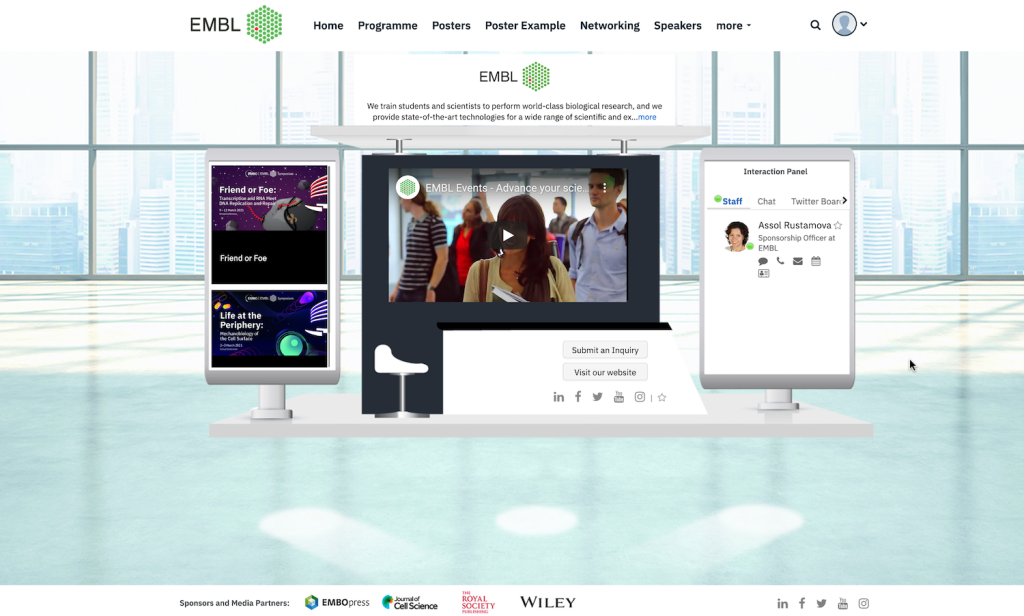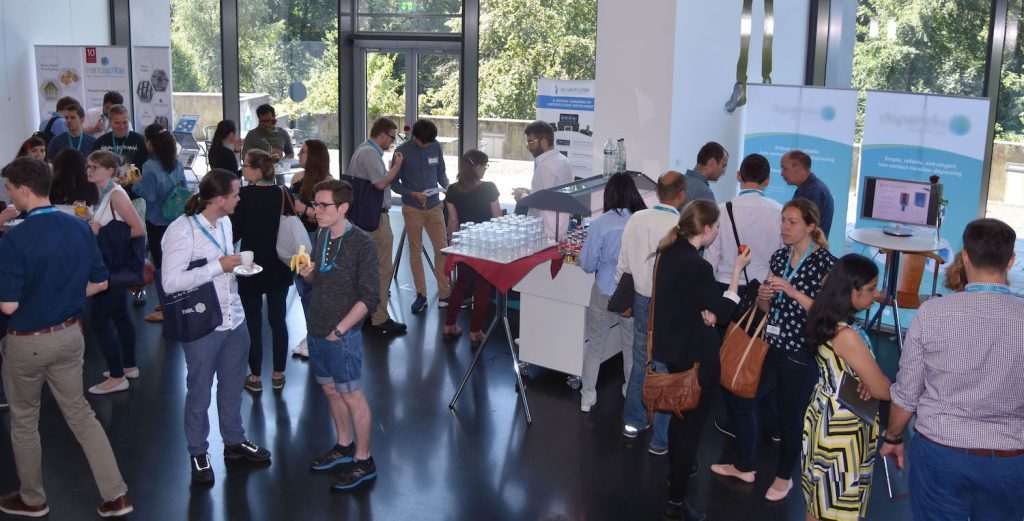Why virtual sponsorship is valuable
Since the start of the COVID-19 pandemic, most events have been hosted entirely virtually. Companies looking to achieve their marketing objectives by means of events sponsorship have now been faced with the question of whether or not to invest in virtual events.

The major challenge that we have observed is that many companies expect the same outcome from their virtual event sponsorship as from an in-person meeting. We often hear that while in-person conferences offer possibilities for networking and casual talks, the virtual format is difficult and less efficient in this respect. At our in-person meetings, for example, exhibition booths with big banners are placed in the hall, right next to the catering area. Participants have enough time to walk around and strike a spontaneous conversation with sponsors during the breaks. The virtual format, however, is different. Participants usually attend virtual conferences from their home, often juggling work and family duties. They are more selective about the kind of content they access and prefer to schedule their interactions.
At first glance, this focused approach to attending virtual conferences may not seem as beneficial for sponsors. At the same time, however, there are several ways in which virtual meetings can lend themselves well to providing opportunities for sponsors.
🌎 Wider reach
The number of participants at virtual conferences is normally much higher than at in-person meetings due to them being more affordable and more accessible. The sponsors’ brands could therefore reach wider and more diverse audiences.
💸 Lower cost
Similar to the registration fees, the cost of virtual sponsorship is lower. In addition, companies save on the usual costs associated with sponsoring or exhibiting at a conference such as travel and accommodation for staff, booth design and set-up and shipping. With all this budget left unused, companies have the opportunity to invest in producing content that is relevant and engaging for participants.
📣 More diverse advertising formats
Sponsoring a virtual conference also means making use of all digital content formats available in the virtual venue – banners, videos, flyers, white papers, polls and webinars can all be used to further engage with participants. Digital booths give participants the opportunity to access at the time that is suitable for them, browse material, chat with booth staff, or have a video call to quickly get the answer of a pressing question about the company’s products they are using.
🗓 Extended exposure of branded material
Participants are generally given access to our virtual venues for an average of 4 weeks. In this way, sponsors get extended exposure for their brands and products and have the option to follow up with participants after the end of the meeting is over.
📈 Campaign insights
Contrary to physical conferences, measuring the success of your marketing efforts and the ROI of your sponsorship is much easier at virtual meetings. The built-in tools of the virtual conference software we use provide valuable insights on the performance of your individual marketing campaigns and help you assess your approach in the future.

Virtual sponsorship is a relatively new concept and one that many companies are still hesitant about. With all of EMBL’s events staying virtual until the end of 2021 and the possibility of hosting hybrid events once we go back on-site, it is now clear that virtual sponsorship is here to stay. It is therefore important to understand that it not only offers opportunities for companies to reach their target audiences in times where face-to-face interaction is limited but it also helps them stay connected with the scientific community.
Written by Asal Rustamova
Interested in supporting an EMBL conference as a virtual sponsor? Get in touch with us at sponsorship@embl.de!
Subscribe to our biannual Events Sponsorship E-Newsletter.